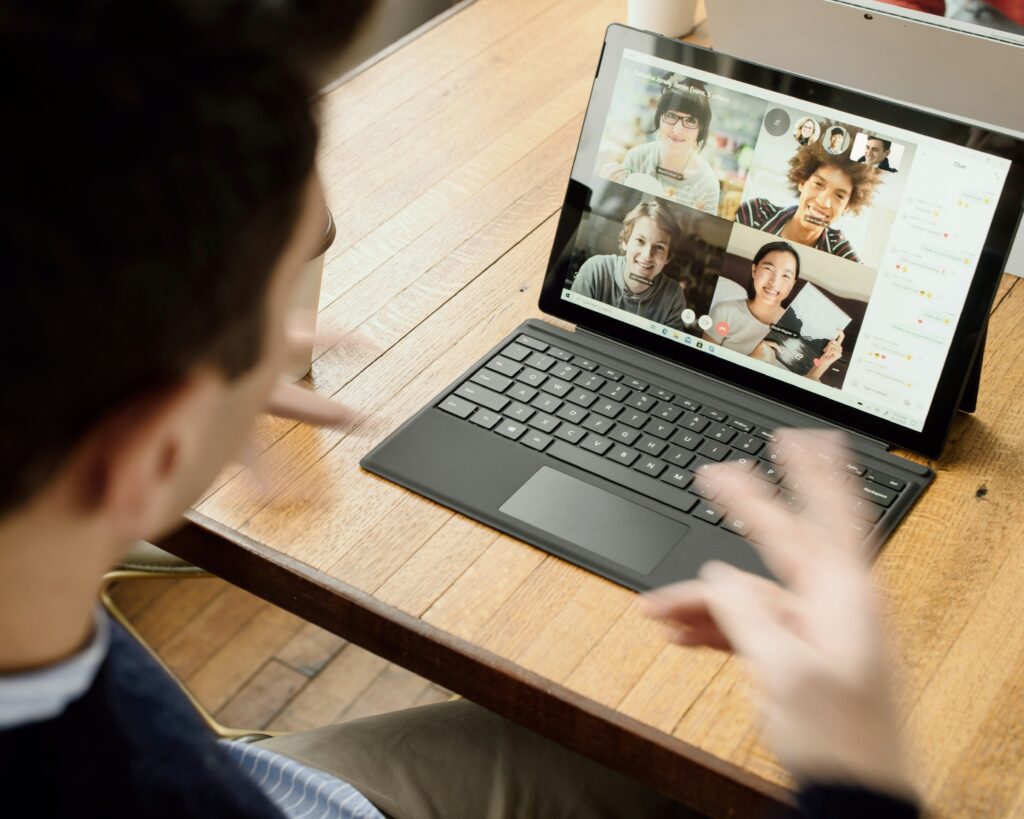
Video Interviews Are Not Optional — They’re a Competitive Advantage
A few years ago, video interviews were seen as a compromise—used reluctantly during lockdowns, reserved for remote roles, or tagged on as a final step in global hiring processes. Today, that mindset is not only outdated—it’s a competitive liability.
At SydSen Recruit, we’ve helped companies across South Africa and the Middle East overhaul their hiring models to adapt to a faster, candidate-driven market. One shift has proven consistently game-changing:
The move from reactive interviews to strategic, structured, video-led hiring.
In this article, we break down why video interviewing isn’t just a convenience or trend—it’s a long-term recruitment differentiator, and a clear edge for companies looking to hire smarter, faster, and better.
Why Video Interviewing Has Evolved
Let’s clarify what we mean when we talk about video interviews today:
-
Async/On-Demand Interviews
Candidates record answers to pre-set questions, in their own time. -
Live Interviews via Zoom/Teams
Real-time interaction, replacing in-person meetings. -
Structured Video Panels or Assessments
Integrated into early or mid-stage screening alongside technical tests or psychometric tools.
Far from being “less personal,” these formats offer greater consistency, accessibility, and efficiency—when done right.
5 Reasons Video Interviews Are Now Essential
1. Speed to First Contact Wins Talent
In competitive markets, speed matters. The longer your hiring process takes, the more candidates are lost to faster-moving competitors.
Video interviews:
-
Enable 24/7 screening (candidates complete when they’re ready)
-
Cut first interview scheduling delays
-
Give recruiters an early sense of fit without bottlenecks
Impact: Companies using async video typically reduce time-to-hire by 30–50%.
2. Consistency and Fairness in Screening
Live interviews often differ wildly depending on the interviewer’s mood, time pressure, or biases. Video interviews standardise the experience:
-
Every candidate gets the same questions, tone, and time.
-
Reviewers can replay responses to assess more accurately.
-
Biases are reduced with structured scoring frameworks.
Result: Fairer, more inclusive processes—especially valuable in high-volume or graduate hiring.
3. Improved Candidate Experience
Surprisingly, candidates appreciate the flexibility of video:
-
No travel required
-
Less stress from in-person pressure
-
More time to reflect on answers (especially with async tools)
Bonus: Forward-thinking companies that communicate clearly and treat video as part of a thoughtful process—not a lazy shortcut—stand out immediately in the minds of candidates.
4. Better Collaboration Across Hiring Teams
In many organisations, hiring is delayed because:
-
Managers aren’t available
-
Notes get lost
-
Interviews aren’t recorded or structured
Video solves this:
-
Review panels can watch interviews at any time
-
Notes and scores are recorded centrally
-
No more "I forgot what they said" or "can we do another round?"
Upshot: Faster consensus. Better quality discussions.
5. More Signal, Less Noise
Live interviews sometimes hinge on small talk, nerves, or charisma. Video interviews—especially when paired with tools like RoleFit, SPA, or task-based prompts—let you assess:
-
Communication clarity
-
Alignment with role values
-
Coachability, curiosity, and composure
Advantage: You get richer signals earlier, so you waste less time on misaligned profiles.
The Role of Video in South Africa and the Middle East
In South Africa:
-
Widespread mobile access supports async tools.
-
High youth unemployment makes mass screening a priority.
-
Transport and location barriers are minimised with digital-first outreach.
In the Middle East:
-
Video reduces challenges in cross-border and expat hiring.
-
It creates speed and structure across distributed teams and time zones.
-
It aligns with the shift to smart government, remote-first, and digital transformation policies in the UAE and GCC.
Bottom line: Video bridges geographies, languages, and time constraints in both regions.
Common Myths About Video Interviewing
❌ "It’s impersonal."
✅ Truth: It’s how you use it. Pair with thoughtful messages and human touch points.
❌ "It’s only for junior roles."
✅ Truth: Executives appreciate efficient, high-respect processes.
❌ "Candidates won’t like it."
✅ Truth: Candidates dislike long, confusing, unresponsive processes. Video helps reduce those—when framed well.
How to Do Video Interviewing Right
At SydSen Recruit, we advise clients to follow this simple framework:
1. Define the Purpose
Is this a screening tool? A value fit check? A technical assessment? Be clear internally and with the candidate.
2. Keep It Short and Focused
For async: 3–5 questions max
For live: Use structured templates with key scoring themes.
3. Train Your Team
Interviewers need clear rubrics and examples. Candidates need prep info and respect. Create consistency and confidence on both sides.
4. Integrate with Psychometrics
Don’t just rely on gut. Tools like SPA or OCAI add objective context to subjective responses.
5. Follow Up Fast
Video only works if it’s part of a fast, respectful process. Don’t leave candidates in limbo after submission.
📊 Real Example: Video Transformed the Process
A national training provider in South Africa struggled to screen 200+ applications per month for regional sales coaches.
-
Old model: Phone screens → panel interviews → 3–4 week process
-
New model: Async video interview with 4 questions + automated SPA
Result:
-
Time-to-first-contact cut from 9 days to 1
-
Interview-to-offer time reduced from 22 days to 8
-
Manager satisfaction improved by 43%
-
Candidate experience rated “excellent” by 87% of applicants
Final Thought: It’s Not a Trend—It’s a Tool
Video interviews are not about replacing humans. They’re about amplifying quality, removing friction, and respecting time—for both sides of the hiring equation.
In markets where great people move fast, and alignment matters more than ever, video isn’t optional. It’s your edge.



















